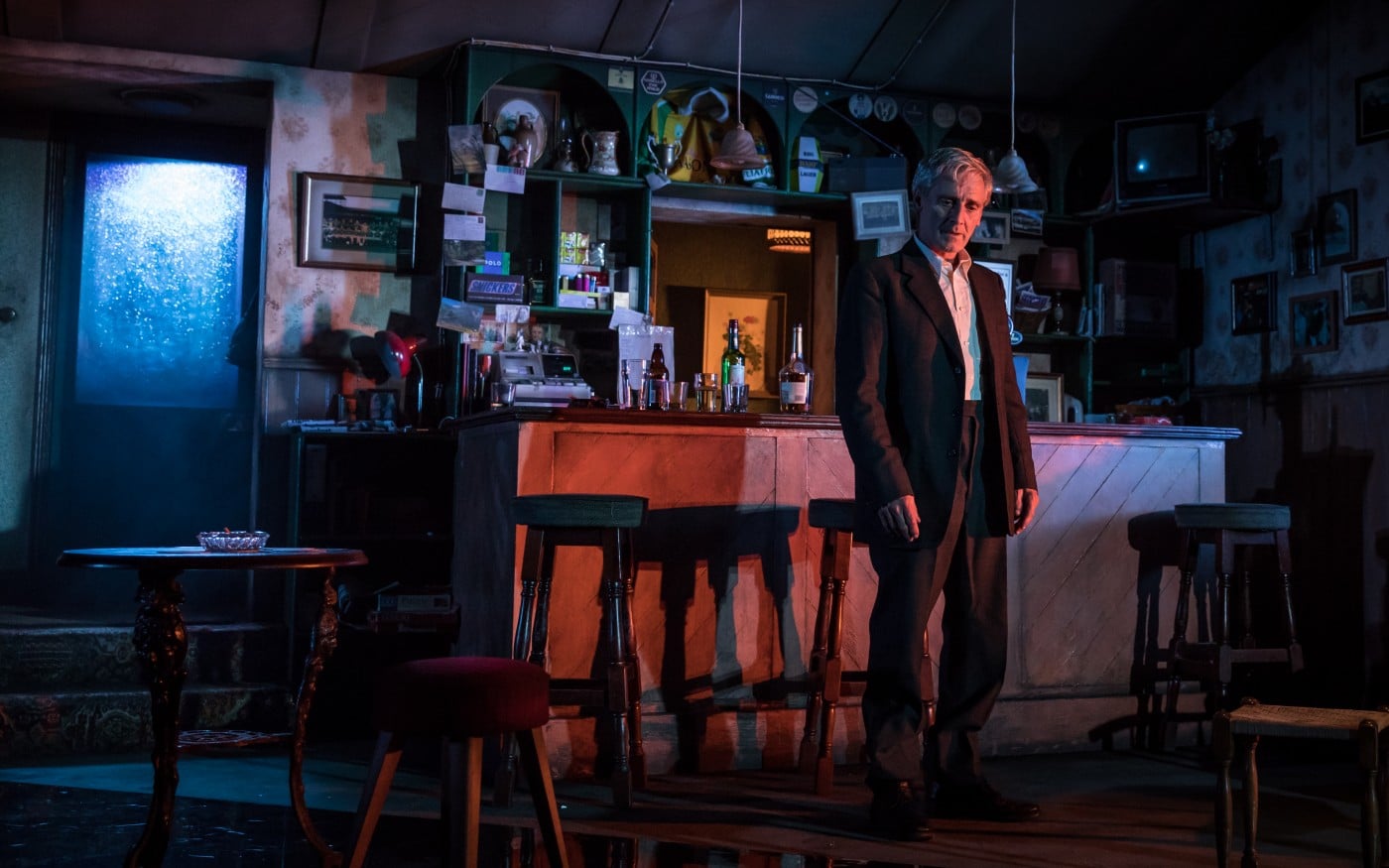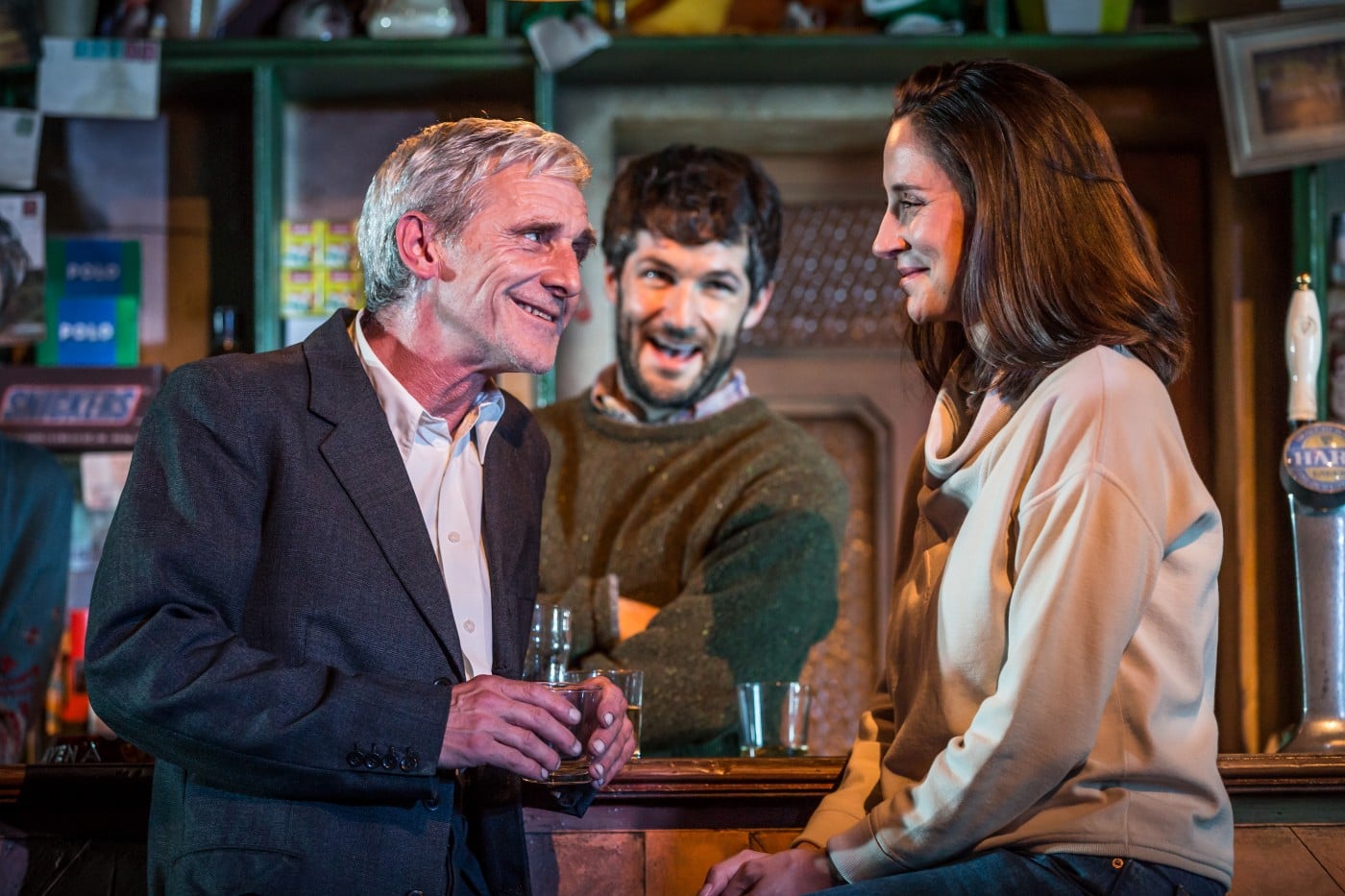“Lurking in its fabric is something unnervingly awry”: The Weir @ Richmond Theatre
March 19, 2018

Resurrected from its 20 year old debut performance, Conor McPherson’s The Weir centres around uprooting the lineage of Irish folktale and takes themes of haunting and wonder to its core. It is not a play of ghosts and heroes yet, undoubtedly, lurking in its fabric there is something unnervingly awry. As I shuffled through the rows of chairs awkwardly looking for my seat the play had already began with no reveal or obvious commence. I wasn’t late though; this was the point. Opening with an image and no words, a poised setting of three men sitting in a dark room drinking away their solitude and watching the modern world pass them by, you catch them at just the right time.
At the ripe age of just 25 when McPherson wrote the play, he attributes its appeal to the simplicity of a story, ‘its dogged insistence on story-telling. The hunger for a story, with a beginning, middle and end, is huge: it’s very ancient, because it’s very satisfying. It sounds simple, but it’s actually very hard to do.’ The resolutely masculine opening, soon gets disrupted by Valerie, who after being offered a pint of wine interrupts the lonely order of things. Her ability to interweave her own narrative and use story-telling as a vehicle of expression to add significance and colour the dreary landscape of her gloomy landscape is the whole mastery of the play. Each thread of her narrative is imbued with greater signification than just the everyday, and in doing so offers the men some comfort and companionship as an alternative to their warm dregs of beer to cling to. The play enacts a highly visceral notion of connection and community where her stories from the past connect her to the other men. She adds warming fluidity to the setting, as a traveller from outside she rejuvenates the interest in listening to stories through fresh narratives and touching deliverance.

McPherson comments that his play intends to be ‘a very unconscious play’ and, much like his style in The Girl from the North Country, it avoids having a a deep sense of intellectual clarity. Following the acclaim that The Weir initially brought, he began to drink heavily until he was eventually hospitalised, and looks back on the experience with touching gratitude. He comments,‘obviously it’s very confusing if you’re in any kind of discomfort trying to figure stuff out. It takes you a while, but once I did I realised its very simple: I’m not able to drink and that’s fine’.
The Weir expects the same maturity from its audience by refusing to literally fill the irritating gap of paintings on the collage of pictures on the wall and deliver a coherent message. This is surely a bid to his aim, ‘I’m trying to convey the messy feeling of swimming around in all the shit that we swim around in’. With no real climax of comedic value or moral enlightenment, the production gives an initial edge of disappointment. Indulging in the idea of unfulfilled melancholy is also the focus of Girl from the North Country, yet this play is unique for being stripped down to the bare realism of a bare pub. To enjoy this play fully is to enjoy the experience of being fly on the wall in a dilapidated bar with no real significance but to also cling to the stories you as they multiply and develop and to fit them into a narrative of your own. To understand this play is to acknowledge its pivotal message that ‘we’re all a bunch of headbangers’ and accept the endurance of that chaotic truism.
Filed under: Theatre & Dance
Tagged with: Conor McPherson, Richmond Theatre, The Weir, theatre review


Comments